Japanese Design Archive Survey
DESIGN ARCHIVE
Designers & Creators
Chiaki Murata
Product designer, Design producer
Interview: 2 April 2025, 13:30-16:00
Place of interview: hers design inc.
Interviewee: Chiaki Murata
Interviewer: Yasuko Seki
Author: Yasuko Seki
PROFILE
Profile
Chiaki Murata
Product designer, Design producer
1959 Born in Sakaiminato City, Tottori Prefecture
1982 Graduated from Applied Physics from the Faculty of Engineering at Osaka Metropolitan University
Joined Sanyo Electric Design Centre
1986 Established ‘hers design inc’.
2004 Launched ‘METAPHYS’ brand, a corporate consortium business
2014 Published “Textbook of Social Design”
2015 Published “Behavior Design Thinking Methods to Solve Problems”
2017 Published “Kansei Potential Thinking Methods“
2020 Published “Bugtori Design”
2020- Visiting Professor, Institute for Innovation Education, Osaka Metropolitan University.
2024 Opening of the “Design of Behavior Museum @ Suzhou Qingkeng International Design Village, Suzhou, China
2025 Appointed President of the Japan Industrial Design Association (JIDA)
World Industrial Design Association (WIDA) Vice President
Appointed Fellow of the Japan Institute of Design Promotion
He has served on many juries, including the Good Design Award of the Japan Institute of Design Promotion, the German IF Design Award, the Kyoto Design Award, Niigata IDS Design Competition, Design Intelligence Award, Design for Asia Award and the Singapore Design Award. Teaches at Tama Art University, Kyoto University of Arts, Kyushu University, Aichi Prefectural University of Fine Arts and Music, etc.
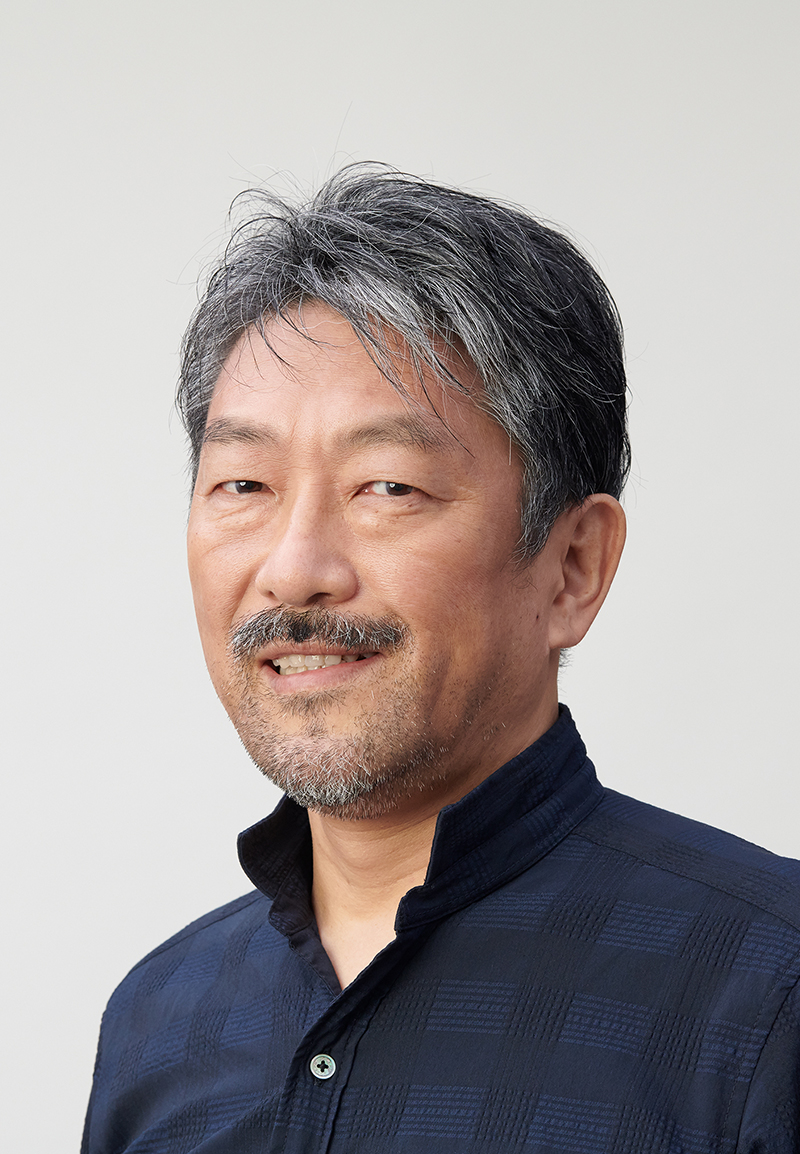
Description
Description
Chiaki Murata's design activities cannot be described without saying that Osaka is his base. This is because, unlike in Tokyo, where large corporations, media and creators are concentrated and ‘design fields’ are established, Murata, who is based in Osaka, had to start by cultivating his own ‘design fields’. However, it can be said that cultivating this field is what has shaped his unique design.
Many of Murata's best-known works have been born from this ‘field’. For example, the electronic candle ‘hono’, his masterpiece, is a hit product of the METAPHYS brand, a consortium with small and medium-sized companies in Osaka. The globally acclaimed seawater desalination device ‘MYZ E-40’ was financed with initial investment from a fund he set up himself. The products of Murata's design field are not only cool in design, but also have a social perspective, the latest technology and a unique story that leads to new acts and behaviours.
Another feature of his work is that he analyses, conceives and realises the sensibility field of design scientifically and objectively, based on his background in applied physics at university. One aspect of his work is described in his book, “Bugtori Design”. In the book, Murata's belief and actions that ‘if you pay attention to people's actions, you can see what design should be’ are described through many examples.
In this interview, Murata repeatedly said that he had to do it because “It was Osaka, I had to do it”, but from Tokyo's point of view, he wanted to reply, “It was Osaka, You made it possible!” Of course, Murata's ability to conceive and implement grandiose designs was a major factor.
Murata's design field has expanded beyond Osaka to China and Europe, while deepening into education, management and administration. As the very embodiment of design thinking, we hope that Murata will continue to transmit designs that are only possible in Osaka.
Masterpiece
Main works, projects
Electrical outlet ‘node’, METAPHYS (2004)
Blood Pressure Monitor, OMRON HEALTHCARE (2004)
Electronic candle ‘hono’, METAPHYS (2005)
Design production for ‘Hyakunen Monogatari’, Niigata Industrial Creation Organisation (2005-)
Partition ‘falce’, METAPHYS + Morita Aluminium Industries (2006)
3D measurement laser microscope, Olympus (2009)
Step Stool ‘lucano’ , METAPHYS + Hasegawa Industry (2009)
Drip stand for children, Medidia (2010)
New Traditional Crafts Produce Project, Tokyo Metropolitan Art Museum (2012)
Travel case ‘TRADDY’, Cainz (2015)
Dish Detergent Stand, Saraya (2016)
Massage chair ‘Lupinus Robo’, Family Inada (2018)
Conpact Sewing Machine MM10, AXE YAMAZAKI (2020)
Infusion drip controller ‘SEEVOL’, Murata (2021)
KOTOS Kyoto Satoyama SDGs Lab Design produced by Yura Corporation (2020-)
Metal hammock ‘float’, Kowa Industries (2023)
Main publications
“Textbook of Social Design” Productivity Publishing (2014)
“Behavior Design Thinking Methods to Solve Problems” CCC Media House (2015)
*Published later in Korea and Taiwan
“Kansei Potential Thinking Methods“ Productivity Publishing (2017)
* Published later in South Korea and Taiwan
“Bagtori Design” Asahi Shinbun Publishing(2020), etc.
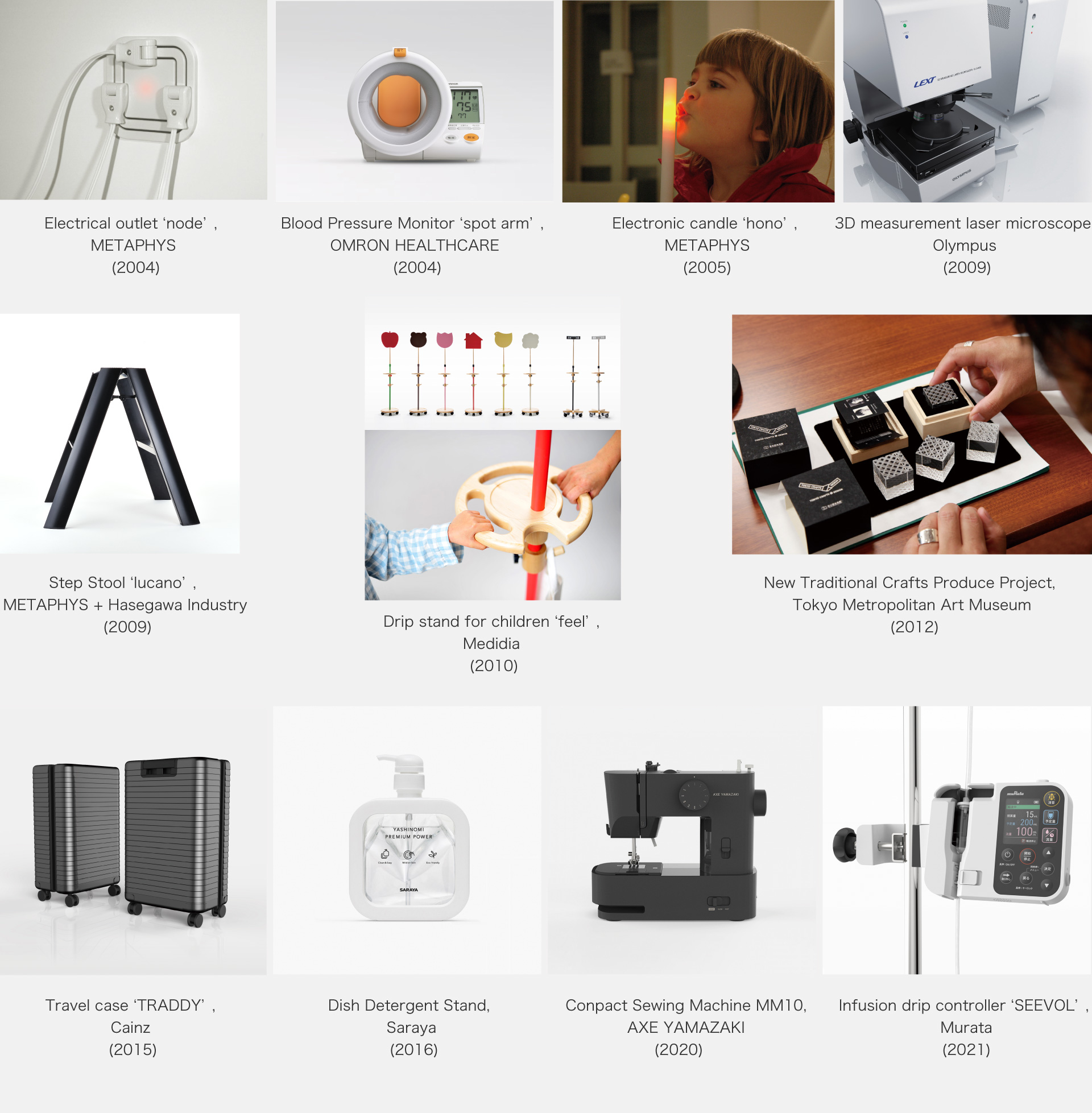
Interview
Interview
Cultivating Dual-Major Designers and Design-Led Leaders Is the Key
From physics to design
ー First of all, please tell us about your path to becoming a designer.
Murata My father worked in the construction industry and we moved from Tottori to Tokyo when I was two years old. My family was poor, but I loved drawing from a young age, so I went to study painting at an artist's house under my parents' policy that I should do only one thing I liked. I used to do perspective drawings of trains coming out of tunnels. I usually used a blackboard and chalk from my father's construction site to draw, erase and draw again. I made a sledge out of building materials and rubbish from my father's construction site, and made almost all of my own playthings. When I was in my fourth year of primary school, we moved to Higashiyodogawa, Osaka.
ー So you had the makings of a designer even as a child.
Murata My best memory from those days is of the 1970 Osaka World Expo when I was in the fifth year of primary school, it was a shocking event. I couldn't afford the admission fee, so I cycled to a place close to the venue, broke into the venue through a secret hole and looked around, and when I got home I made paper models of the pavilions I had seen. The cutting-edge technology and science at the Expo was also interesting, and from then I became interested in space and physics, and I longed to become a researcher or scientist, so I went on to study applied physics at university. At university, I worked on electron multipliers that could measure weak cosmic rays such as phonons and photons in a chamber that reproduced ultra-high vacuum conditions close to those of space on Earth.
ー What made you decide to pursue a career in design?
Murata For one thing, I began to feel that physics was not for me. Because, in the world of science, not just physics, I need to make an effort to update the research and hypotheses of my predecessors. I was seething at the fact that I could only advance step by step, and I began to yearn for intuitive work where I could leap forward in a single bound. Another reason was that I had been drawing pictures in the art club at university. I vaguely thought that design would be good for me...
ー But then again, design is a step away from physics.
Murata Physics is written as ‘the truth of things’, but I am interested in the ‘search for truth’ in the world, not just in science. Through physics, I learnt the thoughts and methodologies to approach the ‘truth’ and acquired an attitude of wanting to know the essence and structure of everything. Design also overlaps with physics in that it explores what people want and shapes new worlds. Traditionally, art and design have been regarded as the realm of the senses and the contents of the black box have never been discussed logically, but I thought I could use logical methods to open up new horizons in the elusive field of design.
In other words, I thought that ‘design’, which is based on backcasting thinking, suited me, and that I could also make use of a different physics approach to other designers.
ー That's a very Murata’s way of thinking. However, how did you end up joining Sanyo Electric (hereafter Sanyo) as a designer?
Murata I had not studied design, so I thought it would be difficult to work for Matsushita or SHARP, so I narrowed it down to Sanyo. The person in charge of human resources at Sanyo suggested a research position, but I was aiming for an area between design and technology, so I told him I wanted to work on ‘interfaces’, and he suggested that I should join the design department for a week's training. This improbable suggestion later became a turning point in my life.
Twenty-one people, including myself, took part in the training. I struggled with the assignment “TV of the future”. The result was, as expected, rejection. However, Professor Kanematsu, my mentor at the university, arranged for me to retake the exam. I didn't know about it, but I was able to pass. When I found out later, I thought about giving him my first design product, but he passed away before I could do so.
An agonising time in-house.
ー And finally you took your first steps as a designer in Sanyo's design department.
Murata However, I was not allowed to do any design work, and all I did was make copies of sketches and documents. I was getting impatient, thinking that I must have been labelled as being in the wrong field, when my aunt suggested that I go to the waterfall for the first time in my life, and thanks to that, my misty feelings were cleared up. I realised that if I couldn't make it inside the company, I should just compete outside the company.
ー You were able to make a breakthrough.
Murata I then entered an external design competition and the Osaka Industrial Design Contest, the latter of which I won the Grand Prix two years in a row. This was introduced in Sanyo's internal newsletter, which led to one of the design managers telling my boss that he wanted to work with Murata on a project, so he lent me to his team.
ー You got a job that was typical of designers.
Murata It`s’ was a series of household appliances launched in 1984, and I was assigned to the concept team for this project, where I was responsible for building the brand design. The design concept was ‘Voluntary Simplicity’ - learning from the spirit of Zen, eliminating the superfluous and accentuating consciousness. The series of appliances with simple ON/OFF operation, going against the current trend of multifunctionality, aimed to develop a ‘one-person home appliance’ that matched the space and lifestyle of a New York loft-inspired space.
The first nine products - 10 items - were developed, including a coffee machine, vacuum cleaner, iron and hairdryer, all in traditional blue. It`s was a big hit as a pioneer of series appliances, and was sold for more than two decades afterwards. However, even in the It`s project, I only played the role of coordinator between the design offices of the various divisions, but I was not able to design the products.
ー How long did you stay at Sanyo under these circumstances?
Murata Four and a half years. I couldn`t even design for the It`s project, so I moved myself to the design room of the AV equipment Suminodo factory. There I was able to do serious design work for the first time, but the workload was enormous and the amount of overtime was so much that I suffered from detached retinas.
ー A string of bad luck.
Murata Actually, I think it was overwork because I was also running my own research institute and doing other side jobs outside Sanyo. I rented a covered garage in Settsu City, renovated it and operated it as the He:rz Design!
ー Does ‘He:rz mean ‘her’s’?
Murata Yes. I believe that women's sensibilities create culture. That is the underlying idea, but I actually used the notation ‘He:rz’, taking the beauty of the sound of the word and the diacritical marks.
ー Did you design for external competitions there?
Murata Not only that, but I also used my knowledge of physical chemistry to conduct research on mixing chemicals with concrete to create a marble-like material.
The laboratory was full of chemicals. Later, I left Sanyo after working there for four and a half years because I had a good prospect of making some money on the side.
ー So you finally went freelance.
Murata The first thing I did after becoming independent was a solo exhibition called ‘FETISH DESIGN WORKS’in Shinsaibashi, where I exhibited a table with optical fibres in a concrete material developed at the He:rz Design, a fluorite terrazzo table and lighting that projected water ripples, which were featured in magazines and newspapers. The fluorite terrazzo can be imagined as 'Star Piece' by Shiro Kuramata. Matsushita acquired the rights to my fibre optic flooring unit, which was used for the first floor of the Asia And Pacific Trade Centre in Osaka, Japan in 1986, the company name was changed to Hers Design (hereafter Hers) and full-scale activities began.
ー I know you had a difficult time at Sanyo, but were there any good things that happened?
Murata In the early 80s, I got to know Studio Alchimia and Memphis, and especially Alessandro Mendini. At the time I was into so-called postmodern design, and I particularly sympathised with the experimental designs of Mendini's Studio Alchimia. I thought that design was really about experimentation.
ー Could you give us a few more details?
Murata In 1983, the first International Design Festival organised by the Japan Design Foundation was held in Osaka at Osaka-Jo Hall, where design competitions, design awards and design exhibitions were held, bringing famous designers from around the world to Osaka.
Sanyo also participated in the exhibition and exhibited advanced designs that had been selected in-house. A boombox I designed was also exhibited, and to my surprise, Mr Mendini took notice of my boombox and published it in the Italian magazines Domus and Mode as ‘Japanese Postmodern Design’. It later appeared in Axis magazine in Japan. Thanks to this, I was able to meet up-and-coming designers such as Mendini-san and Shinya Okayama. I was treated as a heretic in the company, but thanks to the boombox, my days turned rosy. This was thanks to Sanyo, and it also encouraged me to become independent.
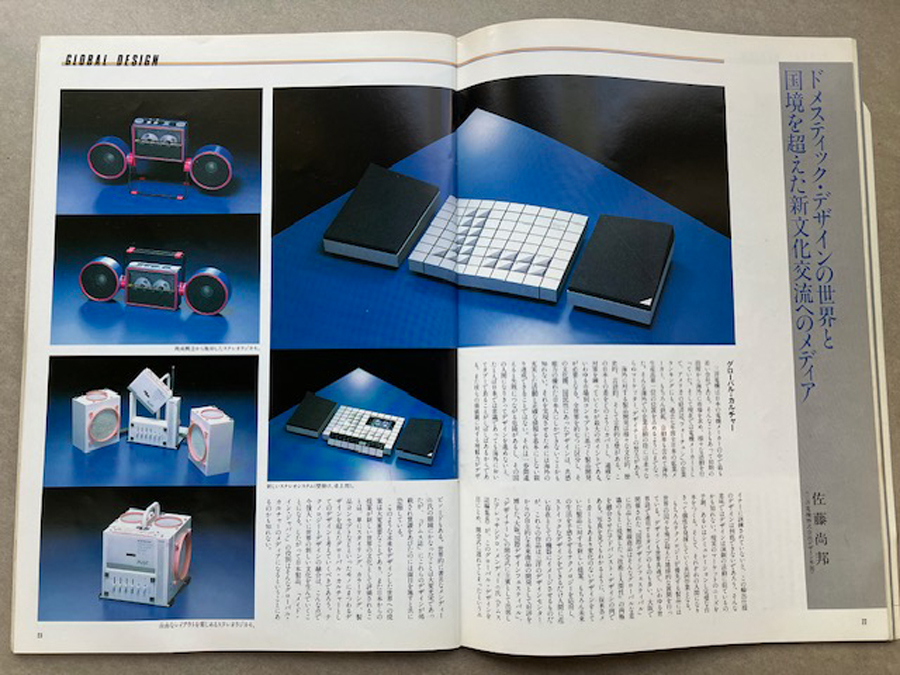
Sanyo Electric's Advanced Design in AXIS magazine. The white boombox in the bottom left is Murata's design.
Based on the ‘Design of Behavior’.
ー What triggered you to switch from postmodernism to ‘design of action’ and ‘social design’?
Murata The most important factor was that I became a freelancer. Until then, ‘design’ for me was ethereal, like grasping at a cloud, an object that I couldn't explain precisely, but when I went freelance and met various clients and projects, I realised that design can be approached in many different ways from different angles. IIn addition to the traditional design perspectives of ‘how beautiful it looks’ and ‘what role the design plays’, there was a third one: how to evaluate the behavior of using the design. In other words, colour, form and significance are important in design, but paying attention to ‘human behavior’ alongside the time axis opens up new possibilities. For example, I thought about how design should be designed to produce beautiful, lean gestures.
ー In your book, you say that you ‘focus on the movements and behavior that enable users to reach their goals’.
Murata When I delved deeper into design from the angle of ‘human behavior’, I realised that ‘sensitivity’ and ‘sociality’ are also parallel themes. This is because they stem from the human psyche and have in common a focus on the conscious and unconscious. When people feel something and act, whether they are aware of it or not makes a completely different difference, so I think it is important how to incorporate the deeper psychology behind people's psychology and actions into design.
Cultivating human resources and soil for design
ー You published a series of books, including “Textbook of Social Design”, “Behavior Design Thinking Methods to Solve Problems”, “Kansei Potential Thinking Methods” and “Bugtori Desig”. Through your books, I felt that you were suggesting a new way of being a designer.
Murata When I was teaching at a well-known art university, I was surprised at the small diversity of the 50 or so students and at the same time wondered that design education as it was now?
ー What do you think should be done?
Murata I believe that designers are the ones who need to double major. For example, Shunji Yamanaka studied mechanical engineering and I studied applied physics before becoming a designer. No matter how many excellent grades you get at art college, you will not be able to survive. Being a double or triple major is an advantage.
ー Of course, designers have to change, but also the society that accepts design has to change, doesn't it?
Murata That's right. In March 2025, my alma mater, Osaka Metropolitan University, established the’ Innovation Academy’, a co-creation laboratory for industry, academia, government and the private sector to create a future society. Although this is not a training institute for designers, I am involved in the preparations for opening the academy, and I would like to continue directing projects that introduce design thinking together with experts from various fields.
ー What kind of organisation is this and what kind of activities does it carry out?
Murata This is where industry, academia, government and the private sector share social issues, and as a ‘Living Lab’ of the Osaka Metropolitan University, graduate students, doctoral students, experts in various fields and people from participating companies manage specific projects to solve problems. There are currently five units - ‘Smart City’, ‘Smart Energy’, ‘Smart Agriculture’, ‘Smart Healthcare’ and ‘Children's Future Society’ - and they are being researched and developed in a networked innovation system centred on the head quarter at Osaka Metroloitan University's Morinomiya Campus.
ー Industry-academia-government-private sector projects often rely on subsidies and are not realised. Does the academy aim to implement projects by working with business and government?
Murata This academy aims not only to publish a thesis, but also to implement it in society for a better future. To achieve this, we have to create a climate that fosters investors and entrepreneurs, who are the key to monetisation without relying on subsidies. Japan is lagging behind globally.
ー But the funding and human resources part is the most difficult.
Murata With regard to founders, Osaka Metropolitan University has organised the Kansai Startup Academia Coalition (hereafter KSAC) in collaboration with 21 universities, more than 60 industries, financial circles and local authorities in the Kansai region to create the ’KSAC = GAP Fund’. I have established two types of design funds within Hers, one in-house and one in collaboration with the Bank of Kyoto. Then I have invested in the design development and marketing of projects that I want to commercialise, and there are several products that I have made possible.
ー Can you give us an example of implementation?
Murata The ’AQSCIL’, launched in 2020, is the world's first ‘water quality meter’ that can instantly measure heavy metals such as lead, mercury and arsenic, which cause water pollution, on the spot. The product was implemented under the initiative of Haas, with Osaka University and Technoglobal developing and manufacturing the technology respectively. The ‘AQSCIL’ has a low start-up burden, with design fees for branding, product design and GUI being covered by the Hars Design Fund.
’MYZ E-40’, also from 2020, is a device that desalinates seawater and has been adopted mainly in developing countries without infrastructure; it is an ultra-compact device based on a patented technology using RO osmosis, and was developed and manufactured by Waqua in Okinawa, while we did the planning, design and implementation to bring it to market.
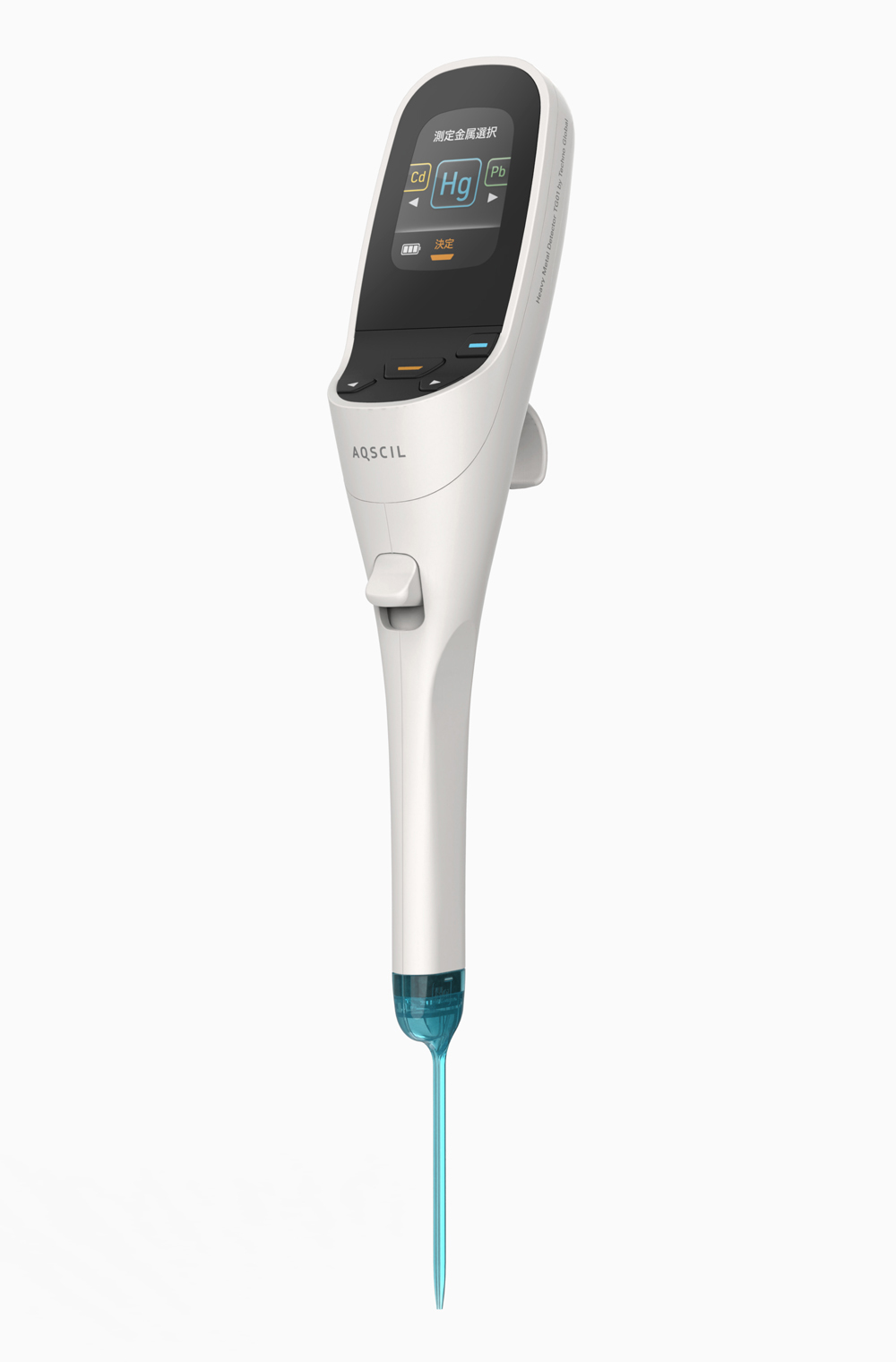
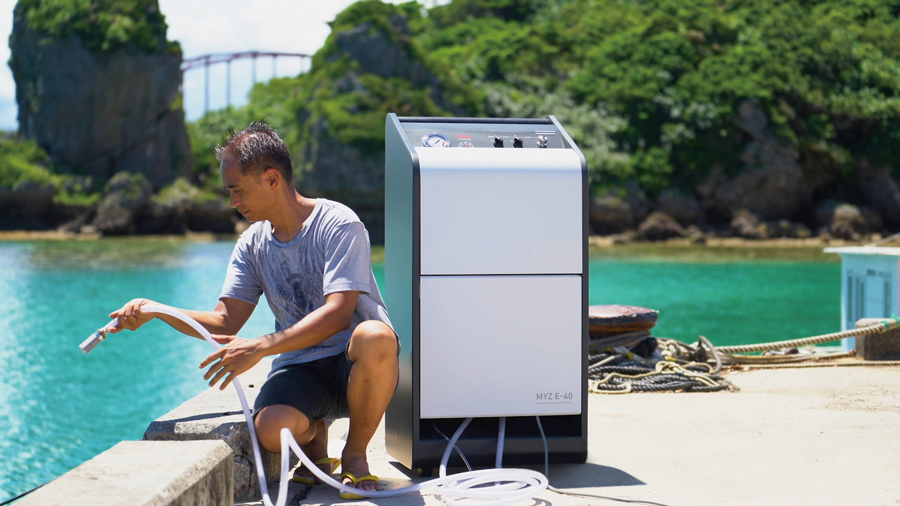
‘AQSCIL’ has a handy, seven-colour-coded nozzle to prevent false inspections.
‘MYZ E-40’ is smaller and smarter, catering to a wide range of users, including developing countries.
Design think tanks for problem solving
ー Do you mean to say that Hers plays the role of an agent that discovers potential technologies and links them with companies and funds?
Murata The Hers Design is a design think-tank that solves problems through design and consists of four main divisions. The Design Division receives design orders and develops products and services, and makes comprehensive proposals based on the flow of ‘planning → visual design → design for publicity’ The METAPHYS Division plans the original brand METAPHYS in a corporate consortium structure, The Design Fund Division is the first design company in Japan to invest design costs in projects with social potential and growth potential. The Produce Division mainly supports regional issues in local areas, using design thinking to find the optimum solution.
ー Is there any particular reason why you take a holistic approach, including funds?
Murata Being based in Osaka, I have to take a different approach to designers in Tokyo. Designers in Tokyo tend to work mainly for large companies that understand design and have an overwhelming amount of work. In Osaka, however, most work is done with small and medium-sized companies. Even if they have excellent technology, they don't have the idea of developing their own products or businesses, and even if they do create something, there are no sales channels, so it is extremely difficult for them to achieve results with their designs.
The METAPHYS brand was born out of these unique circumstances in Osaka, through a consortium of companies. A business division was set up within Hers to plan and develop products that utilise unique technologies, and to manage branding, sales channels and media relations in a total way. Initial costs are kept to an absolute minimum and design fees are earned over a long, thin period of time through royalty contracts. This kind of thinking is essential for small and medium-sized enterprises to succeed in the design business.
ー Getting design orders is the hard part.
Murata I was a designer in Osaka, not Tokyo. I had to do it this way. You can't survive in Osaka unless you do enlightenment and practical work in parallel. That's why I did a lot of workshops to let the managers of small and medium-sized enterprises know the significance of design and design thinking. We needed an easy-to-understand textbook, so we also wrote a book. I am currently writing my tenth book.
ー The METAPHYS brand has developed a wide range of products, from the electronic candle 'hono' to the 'METAPHYS HOUSE'. There's a sense of unity as a brand in the many lines of stationery, kitchenware, toys and furniture.
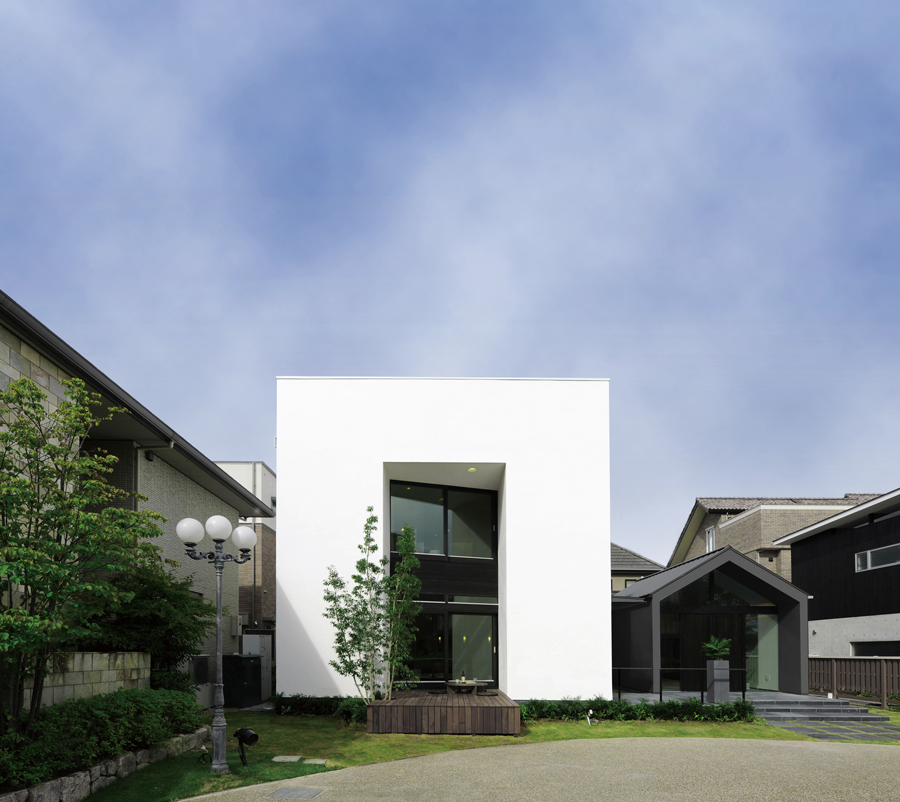
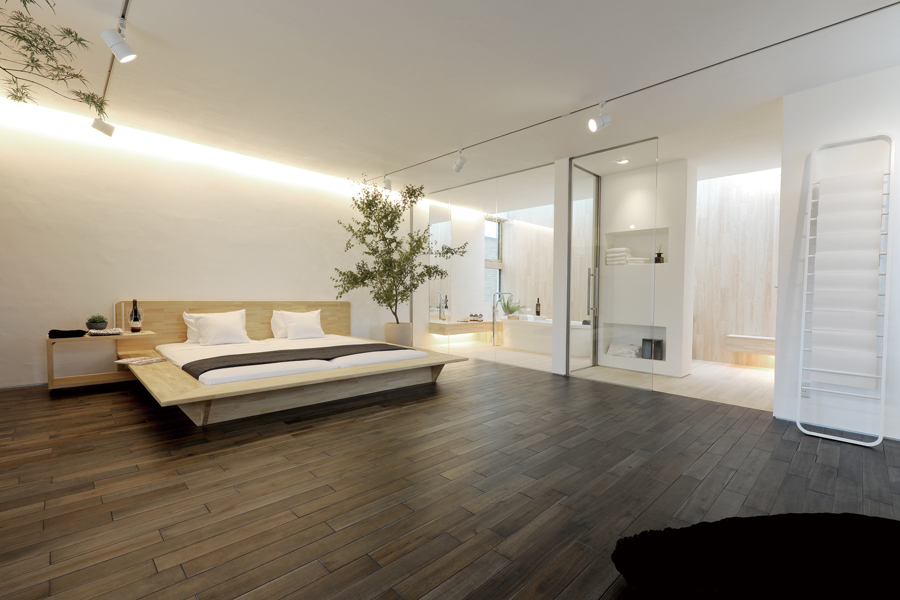
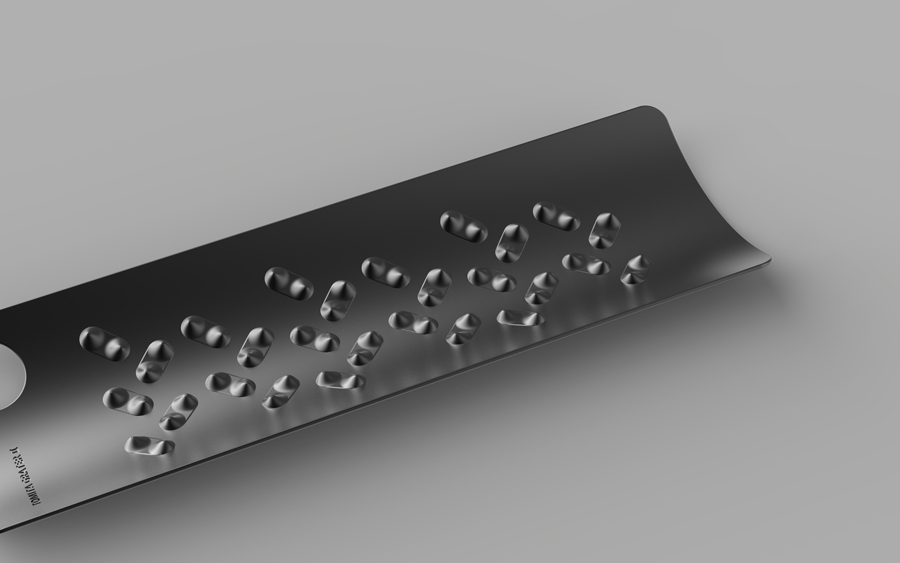
METAPHYS HOUSE is the culmination of the METAPHYS brand, and the Tomita-style grater from Tsubame-Sanjo has no blades, so it won't cut your fingers.
Murata Because I am conscious of the unity of the brand, and the design also reflects my own concept of human behavior and sociality. However, the core of METAPHYS is the technology of small and medium-sized enterprises, so I place importance on technology-orientated design.
ー While METAPHYS is mostly B to C, the design division in Hers does a lot of B to B, such as inspection machines, and has won design awards such as the G-Mark and IF. When you talk about epoch-making projects for you, what are they?
Murata One was a ‘manual digital score counter’ for table tennis and tennis competitions that I worked on in 1987. It is a job I will never forget because it was the first time I received a G-mark and was featured in an international magazine. I had a hard time coming up with a good idea, but I solved the problem with a simple idea: ‘seven parts move to display the numbers from 0 to 9’ and ‘paint the seven parts red and black, so that the red side stands out and makes up the numbers because the base colour is black’.
The other was a job for Shiseido, which I worked on in 1998. Shiseido's sales method shifted from street chain shops to mass retailers. We developed the design for 250 items, including cosmetics packaging renewal and cosmetic tools, to accommodate the self-buy system.
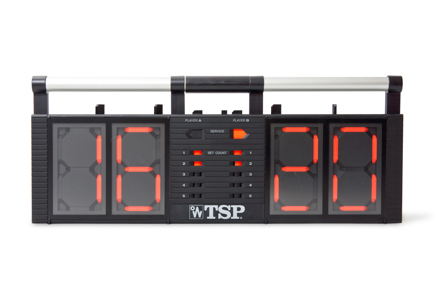
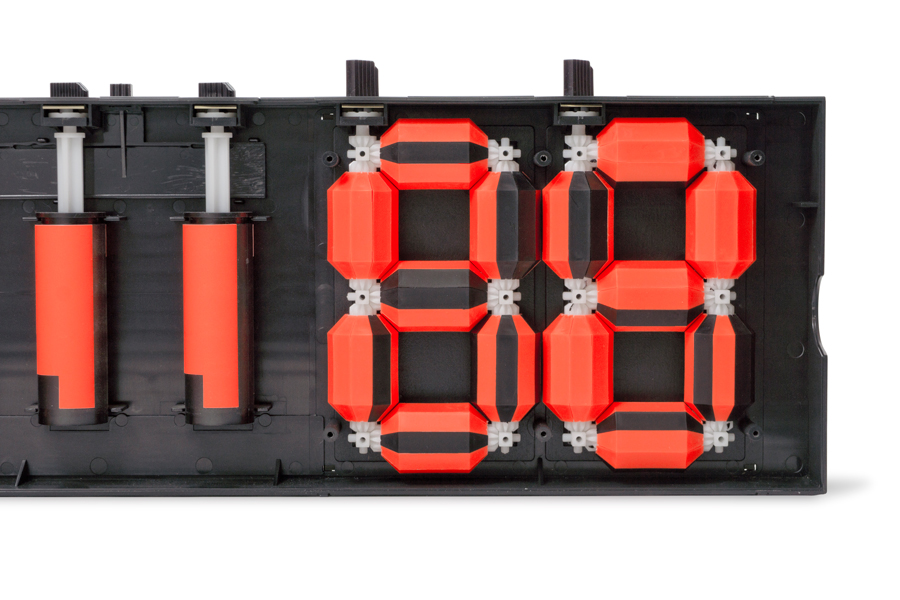
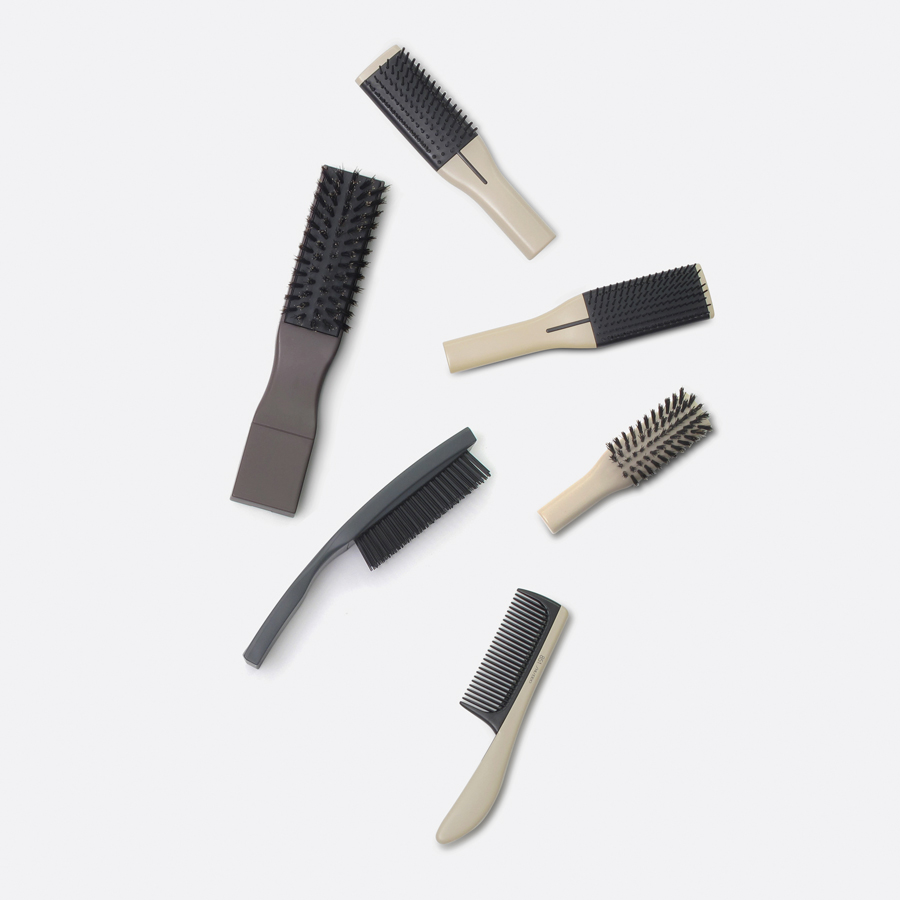
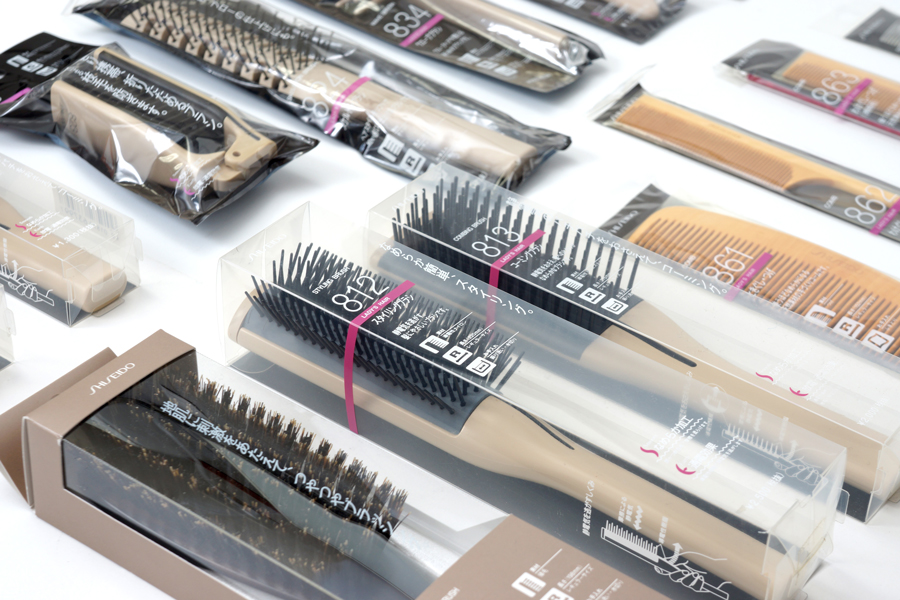
Manual digital score counters have gained a reputation for combining analogue technology with digital design.
Shiseido's cosmetics products and packaging have created a design system for mass retailers, which has been incorporated into individual designs.
ー I heard that you won the competition for Shiseido project?
Murata Our design proposal in line with the railway concept was accepted. The idea was that if you moved along a set of rails, like a train, you could smoothly find the products you were looking for. In order for the customer to be able to find the products and the information they need smoothly on their own, we first built a total design system and then integrated it into the individual designs. For example, pictograms, colour identification, concise explanatory text and product numbering. Systematisation was very effective because of the huge amount of design development.
Design in the post-digital/AI age
ー What do you think about design in the pre-digital and post-digital/AI age?
Murata If you look at digital as a tool, design work has become easier; as for AI, AI designs the best solution by combining information and data available on the internet, which is a good thing, and I think it's just that there are more competitors.
ー But won't AI take over much of the design work ?
Murata We designers have two approaches to design. The first is the same as AI: when we are inspired by something, we quickly assemble the past information stored in our brains and derive a design. AI can do this. The other is the world of ‘0 → 1’, where something is suddenly conceived from nothing, which AI cannot do. I think this is our strength as humans.
ー You wrote about ‘bugs’ in his recent book, and I wondered if ‘bugs’ are unique to humans.
Murata AI can recognise bugs in language and data. At the moment, however, it cannot recognise and process the emotional elements caused by such bugs, such as fear, happiness and discomfort. So in order to go beyond AI, we have to enter the realm of ‘bugs + human emotions’. Unfortunately, however, most designers are stuck with designs that can be done by AI. It is rare to find someone who can come up with a ‘0 → 1’ idea. How to train the ‘0→1’ brain is something I would like to know too.
ー Do you have any examples of designs that have achieved emotional expression in your work?
Murata There is the electronic candle ‘hono’, a CPU-equipped LED candle that, like a real candle, when you blow on it, the flame almost goes out, or when you blow harder, it goes out, and people are surprised, happy, laughing, etc. AI would not be able to create designs that resonate with emotions through human action. At the Milano Salone exhibition, the ‘wit’ possessed by 'hono' was highly appreciated. Last year at JIDA's AI seminar, we experimented with ChatGPT3.0 to see if AI could handle wit, but it didn't work.
I think the key to survival for future designers will be how they incorporate emotional aspects such as ‘wit’, in addition to formative design such as beauty and functionality. People live with ‘empathy’, so I think it is very important to appeal to that.
Design thinking in public administration
ー Murata Your design is unique, but I wonder if there is a ‘search for truth’ at the root of it.
Murata I have always acted with the idea that I have a mission. Behind this was the feeling that Japan is a backward country in design, but at last we are beginning to see design not in a narrow sense but in a broader sense. For example, major consultancy firms such as McKinsey, lawyers and accountants are beginning to adopt design thinking and design management. However, designers are still not good at management and monetisation, and the design field is becoming increasingly fragmented and artisanal, so they are only partially involved in social issues. The main reason for this is that there are still few design departments in top universities in Japan, and people who would be at the top of government and business do not have the chance to learn design thinking and design management.
ー I have high hopes for Osaka Metropolitan University's 'Innovation Academy' and the recently announced 'College of Design' at the University of Tokyo. In terms of design thinking, how is the Japanese administration doing?
Murata Within the administration, there is a cross-agency project team called ‘Japan+D’, led by the Ministry of Economy, Trade and Industry (METI), which is trying to introduce a design approach into the Japanese administration. The ‘Japan+D’ team is made up of young people from various ministries, and they form the nucleus and organise themselves to add design to their work, in other words, to double major their work and incorporate design thinking into their current work.
ー What would you like to see from the members of ‘Japan+D’?
Murata First of all, I would like to see a reform of education. Design is not included in the primary education curriculum. Japanese education focuses on skills education, such as memorising kanji, place names, history and chemical symbols, but is weak on what to work on and what to solve by using these skills to set goals, think and act. It is important to introduce design education from an early age to nurture not only ‘design = skills’ but also ‘design = will’. This will ultimately lead to the development of double-major designers, managers and administrators with a design mindset. There are many challenges in Japan today and the future must be rebuilt. Education is supposed to nurture people who can envision the future and solve problems.
About the design archive.
ー Lastly, I would like to ask you about your own design archive. You are currently curating a museum in Suzhou, China?
Murata The 'Design Museum of Actions' opened in July 2024 in the Qīngtái International Industrial Design Village in Suzhou. It is structured to exhibit a set of Hers Desing's products and our development process, so that visitors can understand ‘what design is’. In June 2025, we will relocate to the building directly opposite. The facility is provided by the China Industrial Design Association (CIDA) and the China-Japan Industrial Design Centre (CJIDC), and will be one of the bases for cooperation between Japanese and Chinese industrial design in China.
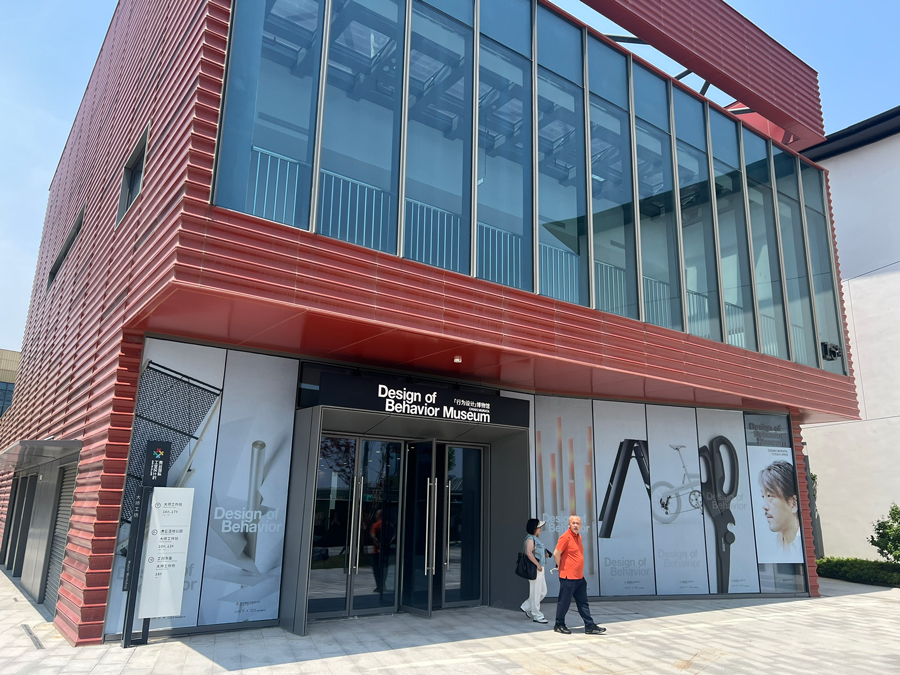
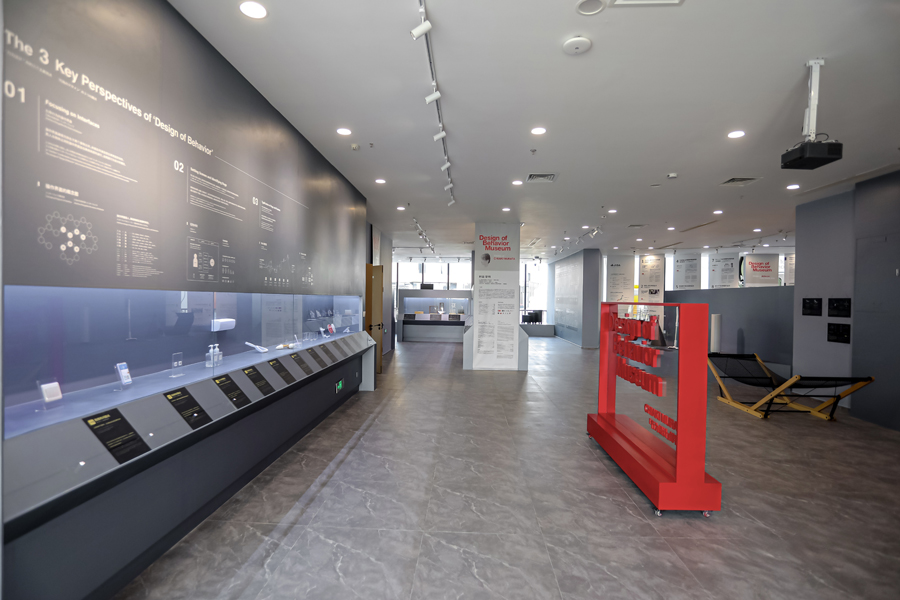
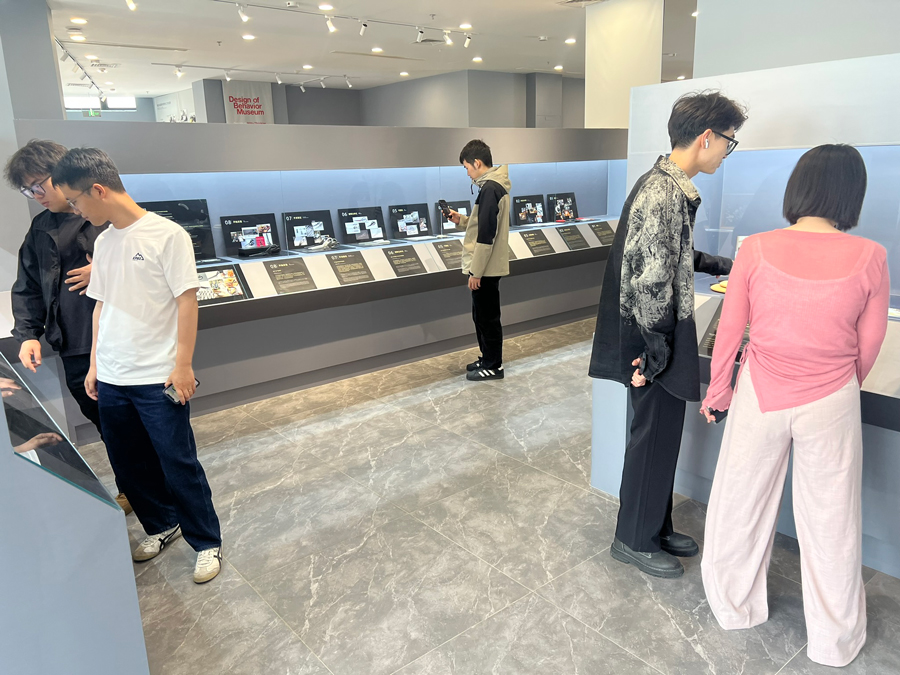
The Design Museum of Action, located in the Qīngtái International Industrial Design Village.(Reopening in June 2025)
ー Will this museum also maintain an archive of your sketches, drawings, models, photos and documents?
Murata Before the renewal, the focus was on products, but after the renewal, it became possible to display hand-drawn sketches and other items.
ー What about sketches and models in the office of Hers Design?
Murata I keep drawings and other design-related data, but I have gotten rid of everything else. The biggest problem is storage space. I've turned all the walls of this room (the Haas meeting room) into a storeroom to store project files. But it would be a huge amount of work to convert these paper drawings into digital data. In our time, drawings and sketches were still on paper, so it's hard because we've lived through both eras.
ー Finally, can you tell us about design museums in Japan?
Murata I think there should be a design museum. I don't think the Japanese government has a good understanding of cultural matters, not just design. I feel sad that Europe, the US, China and South Korea are also actively building museums and design centres. The Nakanoshima Museum of Art, Osaka, is archiving industrial design as part of the ‘Industrial Design Archive Research Project’, but it is not exhibited as a permanent exhibition.
The JIDA Museum in Nagano Prefecture is struggling, as it moved from Nagano to Kasama City after its lease expired.
It is hard to do anything about design museums unless the state or government acts. However, Japan's manufacturing from the 1960s to the 1990s was a valuable period , and many excellent products were born. It is a big problem that there are no traces of this period left at all.
ー Design museums and archives are a really heavy subject. Murata-san's talk made me think that design museums should not only exhibit works, but also delve into the actions and empathy generated by design.
Location of Chiaki Murata's archive
Hers Design Inc.
https://www.hers.co.jp/

